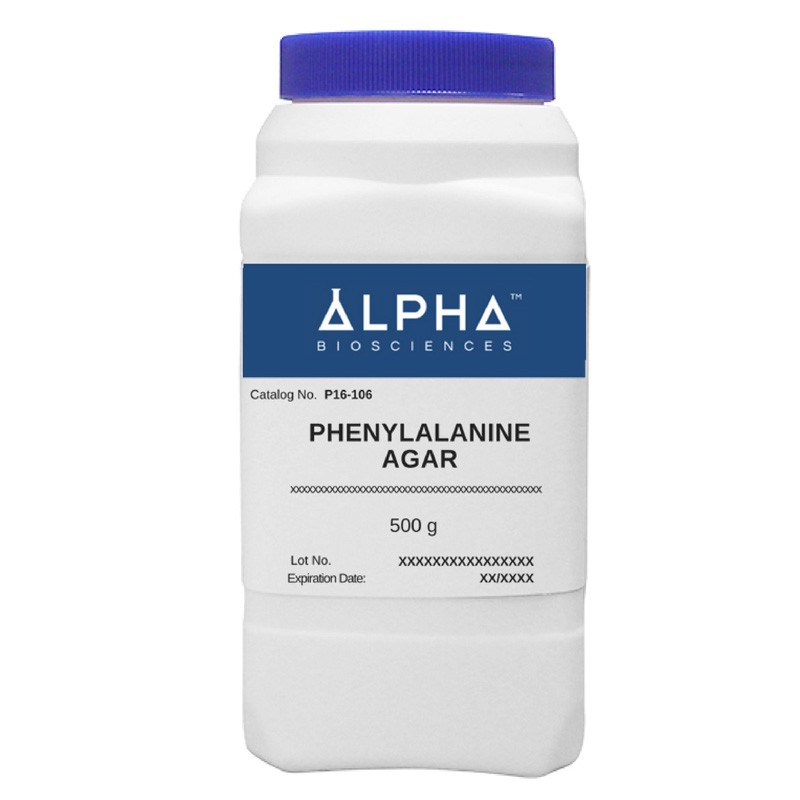- +Products
- +Allergen testing
- +Culture Media - reagents and reference material
- +Environmental testing solutions
- +Laboratory Consumables
- +Laboratory equipment
- +Microbiology equipment
- +Neogen® Food Safety Solutions
- +Temperature & Humidity Monitoring
- Services
- Support
- News
- +About Us
- Contact

Phenylalanine Agar
Phenylalanine Agar medium is used to differentiate the Proteus and Providencia groups of Enterobacteriaceae by oxidative deamination of Phenylalanine to phenylpyruvic acid.
Yeast Extract is a source of B-complex vitamins. Sodium Chloride maintains the osmotic balance and Disodium Phosphate serves as pH buffer. The addition of Ferric Chloride results in the appearance of green color (positive reaction with phenylpyruvic acid) or no color change (negative reaction). Agar is the gelifying agent.
In compliance with regulatory requirements, a USDA permit (VS 16-3) is mandatory for shipments from Canada to the USA due to the inclusion of peptone, an animal byproduct.
Phenylalanine Agar is a solid medium used for differentiating Proteus, Providencia and Morganella species from other Enterobacteriaceae, based on the deamination of phenylalanine to phenylpyruvic acid by enzymatic activity.
The formula is prepared according to Ewing et al. (1957). Some strains of Enterobacter and a few non-fermenting Gram-negative bacilli are also capable of deaminating phenylalanine.
DL-Phenylalanine is deaminated to phenylpyruvic acid. Yeast extract provides vitamins, particularly of the B-group, and other nutrients for growth. Sodium chloride supplies essential electrolytes for transport and osmotic balance. Sodium phosphate is the buffer and Bacteriological agar is the solidifying agent.
Download



